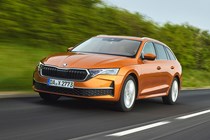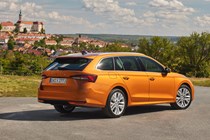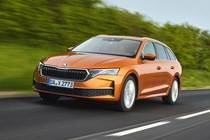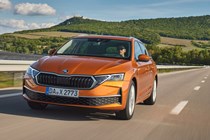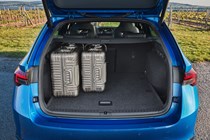
Skoda Octavia Estate engines, drive and performance
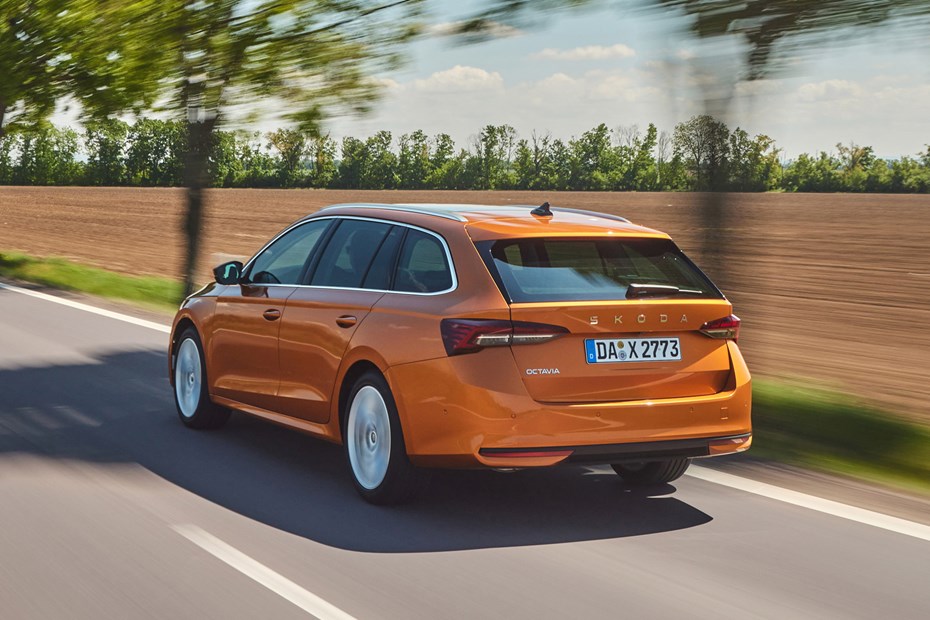
- Facelift engine range has been reduced
- Choice limited to two petrol, two diesel
- DSG automatic petrols are mild hybrids
Petrol engines
Previously the entry-level engine for the Octavia estate was a 110hp 1.0-litre TSI turbo petrol with three cylinders. This has now been discontinued, leaving a pair of 1.5-litre TSI four-cylinder turbos as the only petrol options.
The least powerful of these has 116hp, which will be fine if you don’t plan to carry very much but in a practical estate car like this Octavia we’d strongly advise upgrading to the 150hp version. The extra performance will make lighter work of heavier loads – as evidenced by the 0-62mph time falling from 10.5 seconds to 8.4 seconds.
Both are fitted with six-speed manual transmissions. This feels solid and positive, but like many Volkswagen Group gearboxes it doesn’t like to be hurried.
Hybrid engines
While there’s not currently a plug-in hybrid in the facelifted Octavia range, we are expecting this to return at some point in the future. In the meantime, if you want to maximise your petrol efficiency you can go for the DSG automatic versions of the 1.5-litre engines.

These not only have an extra gear ratio – bringing the total count to seven – they also feature mild-hybrid electric vehicle (MHEV) technology that isn’t available with the manual gearbox. While this doesn’t allow the Octavia Estate to move under electric power alone, it does make the engine more efficient by allowing the petrol engine to rest more of the time. As such it disengages while coasting and the super-smooth stop-start system activates earlier, before you’ve even come to a complete halt.
More than this, because the MHEV system stores energy that would otherwise be lost under braking in a small lithium ion battery, it’s also able to provide a slight boost to the engine at low revs. This is a modest impact, but it does make the hybrid versions of the 1.5-litre Octavia feel more responsive.
Diesel engines
The Octavia continues to be available with a pair of 2.0-litre TDI turbo diesel engines – although for how much longer we’re not sure, as diesel is only predicted to account for around 10% of the facelifted model’s sales.
The 116hp version comes with a six-speed manual gearbox, and needs to be worked quite hard on hills, and will probably feel rather slow if you regularly travel fully loaded. The 150hp model gets the seven-speed DSG as standard, and is very convincing all-rounder. There’s plenty of torque (pulling power), which the gearbox manages well enough that you rarely hear the engine raising its voice.
What’s it like to drive?
- Excellent comfort for long journeys
- Plenty of grip and steer wells
- An acceptable amount of body roll
The Octavia Mk4 is a noticeably more sophisticated car to drive than its predecessor, serving up an artfully judged blend of comfort and road holding that makes it a great long-distance companion that will still allow you to have a bit of fun on twistier roads.
Customer feedback about this balanced performance has been so generally positive that Skoda didn’t feel the need to massively change it during the mid-life facelift process. So even though there is new software for the steering and the electronic stability control, if you’re familiar with the pre-facelift model there are no real surprises – although a slight reduction in steering assistance gives a small lift to the sense of precision.
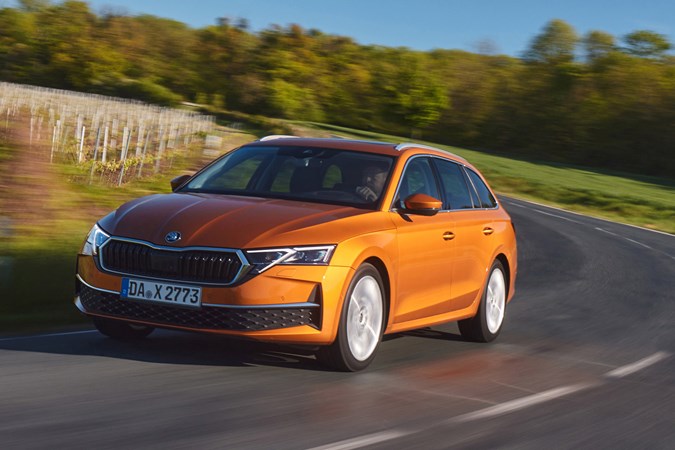
But this is not a car that’s chasing lap times. So while it is a little neater in the turns, and certainly grips well, you’ll still find it rolls around a little more than some rivals. But the body also leans with smooth consistency rather than a sudden jerk: Skoda’s approach is intended to give you a clear idea of what’s going on and allow you the time to react.
Keep your own inputs equally consistent and you can cover ground remarkably quickly in an Octavia Estate, with confidence and in relative safety. For while the suspension is good at soaking up bumps we’ve also found it keeps the car under careful control – none of the suspension movements are excessive. Instead they’re measured and easily understood.
The standard suspension does so well, in fact, that we don’t think many buyers will benefit from the optional dynamic chassis control, which offers variable-rate damping. This stiffens the car up for sportier driving and softens it off when extra comfort is required, but unless you travel on a particularly diverse selection of roads the money this costs is probably better spent elsewhere.
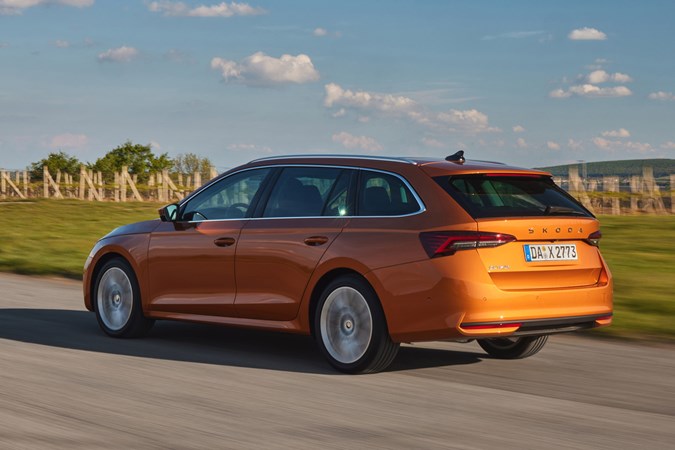
If you do want things to be a bit sharper there’s also the Sportline trim level now, which is 15mm lower and comes with variable-rate progressive steering as standard. Both features are well judged, with the suspension reducing roll without completely ruining the ride and the steering still maintain enough of a natural feel that you soon forget it changes with speed.
Basically, while the Octavia is certainly no sports car it does a good job for a family wagon, proving undemanding yet enjoyable from behind the wheel.


